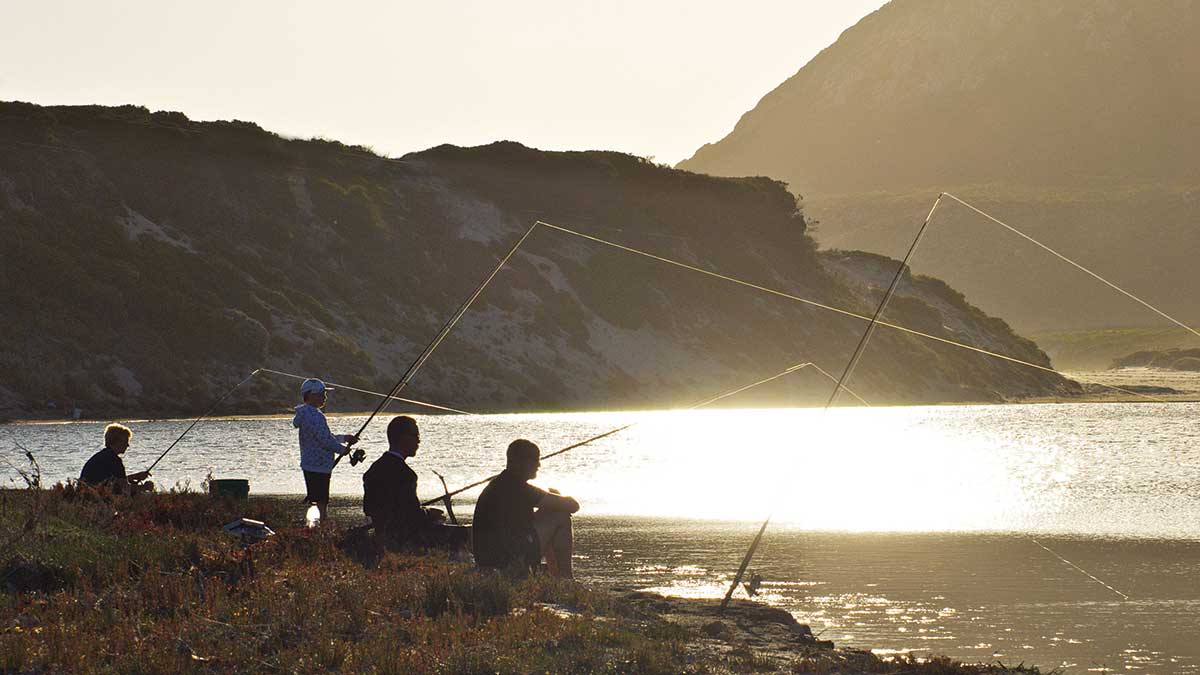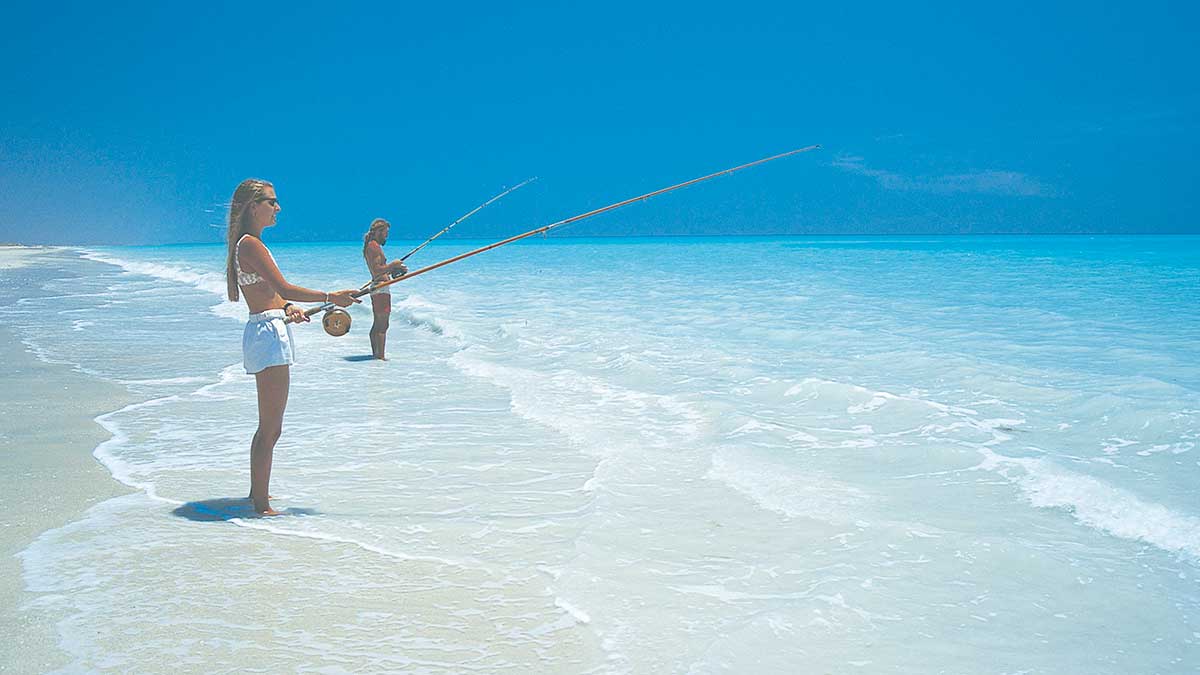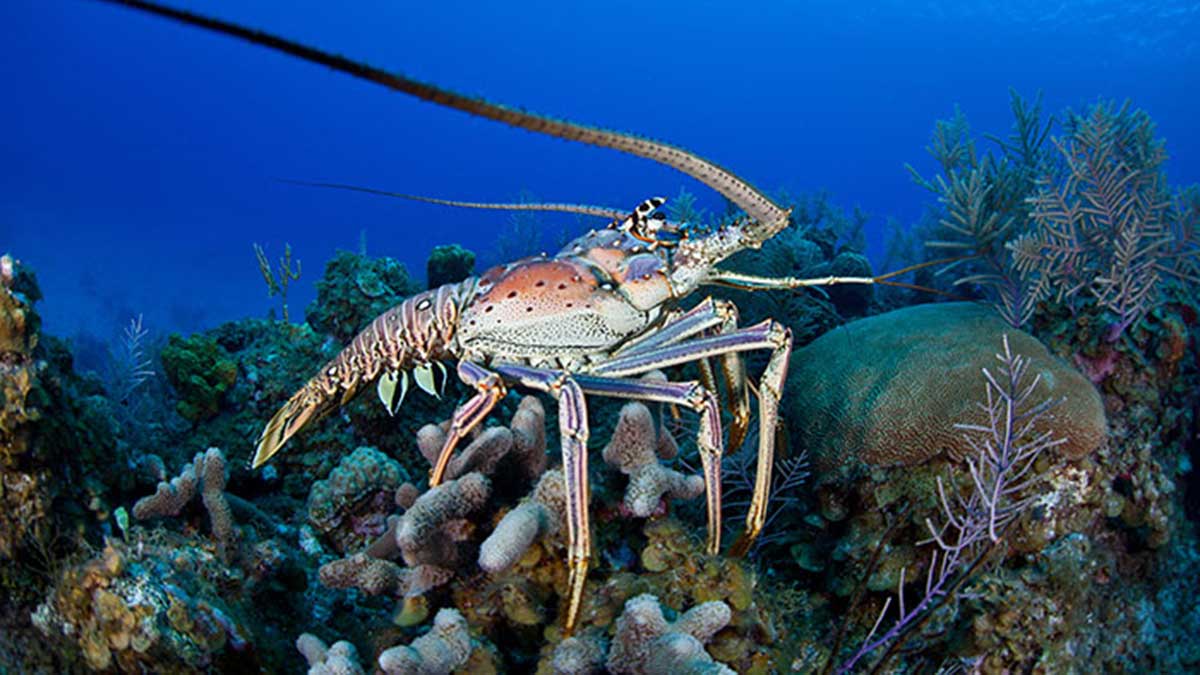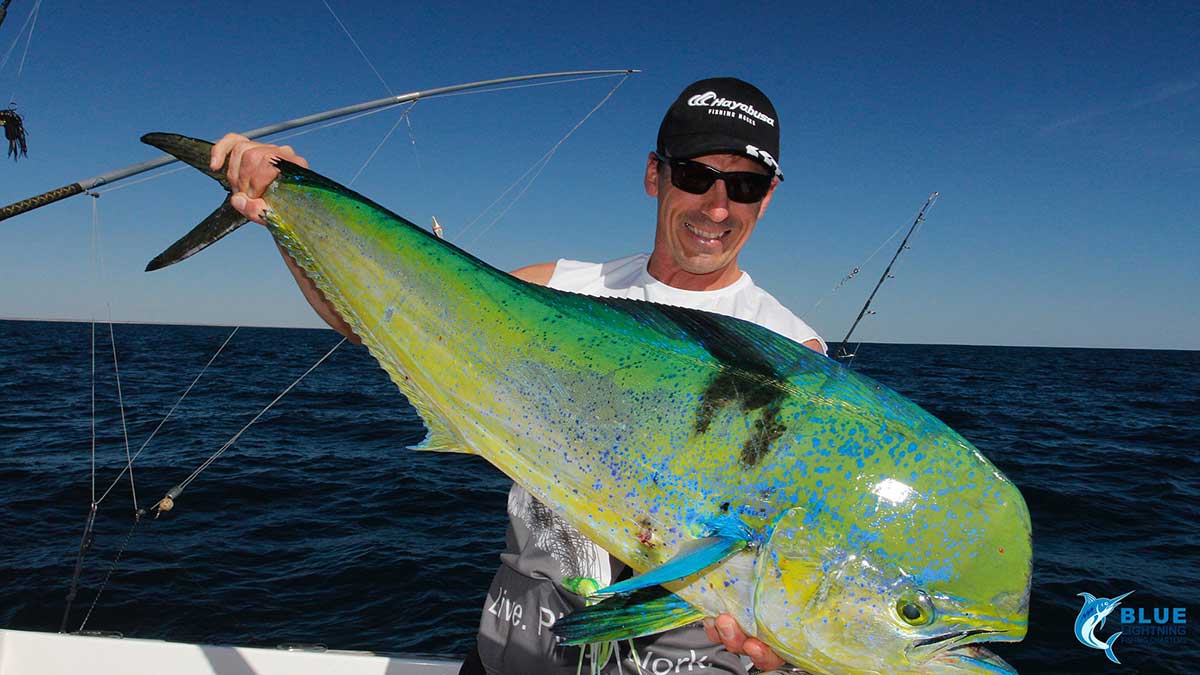Whether you’re into offshore, onshore, spear, or freshwater fishing – there’s something for everyone in WA.
The unspoiled waters of the northwest are a fisherman’s playground and teeming with fish that have never known lure or hook. Down south, the beaches, rocks and waters are populated by fishermen, but if you take your 4WD and go off road there’s a chance you’ll find a secret spot with more fish and fewer people, while inland there’s the mighty Blackwood River with bream and redfin perch. Whilst WA has epic locations and diverse fish species, unbeknownst to some, the waters and fishing are regulated with an iron fist. This blog incorporates the most valuable information for fisherman in the state.

Kimberley

Esperance
Where to go
Offshore
Cockburn Sound
If you’re keen to give yourself the best chance at catching mammoth-sized fish, offshore fishing in WA is the way to go. Not far from Rockingham (also a good fishing choice) is Cockburn Sound, a well-known spot famous for pink snapper (just make sure they’re in season), so head on down to the boat ramp and try your luck. (Maybe bait with mullies or squid). Crab fishing in season is also big here.
Rottnest Island
Rottnest Island’s surrounding waters are popular to fish, but make sure you’re informed when it comes to sanctuary zones and associated restrictions. You can join a charter if you’re after bigger game, or take to the waters yourself. Dhufish, snapper, and herring are just some of the many species here. (Rottnest waters are also known for their blue manna crab and the Western rock lobster). Ask the visitor centre about their fishing guide.
Montebello Islands
The Montebello Islands, known as The Monties, offer fantastic fishing. Catches can include marlin, blue-line emperor, sailfish and bluebone. Set out from Dampier or Exmouth. It’s not a journey for the inexperienced (think intricate reef system), so research conditions first (restrictions apply to the Montebello Islands Marine Park and Conservation Park).
Alternately, opt for a charter, so they do the navigating. There are protected zones within the Dampier Archipelago, but portions are open to recreational fishing (with appropriate licences); just check before heading out. Think red emperor, coral trout, Norwest snapper, and more.
Coral Coast- The Houtman Abrolhos Islands
To indulge in a fishing mecca, head to the Coral Coast. Beyond Ningaloo Reef is a popular location, with many charters offered. The list of species is long – and often large! Craggy, windswept and without a coconut palm in sight, the Houtman Abrolhos Islands are an absolute paradise for fisherman. Consisting of 122 isles or shallow and deep-shelf reef-surrounded atolls, this archipelago lies in the southward-flowing Leeuwin Current, approximately 60km west of Geraldton. The islands are clustered into three main groups: Wallabi, Easter and Pelsaert.
There’s no accommodation on the islands so the best way to get there is via a charter – plenty of fisherman make it a yearly expedition with their mates. You’ll need to check the recreational fishing regulations first, because there are specific rules for the area (the Western Rock lobsters are popular when in season.)
Kalbarri
Another great spot is Kalbarri, where deep-sea fishing off the coast turns up the likes of dhufish, yellowfin tuna, Spanish mackerel and snapper at the very least. The diverse range of species is due to location conditions (between warm waters and cooler waters).
Exmouth
Exmouth’s described as an angler’s paradise. The continental shelf offshore and the shallow gulf help create numerous fishing opportunities (think giant trevally, coral trout, mackerel and locally renowned giant herring). Game fishing is big, and Exmouth is renowned for it, including all Australian billfish species. There are a number of boat ramps, or alternately, choose from one of numerous charters, but check the Ningaloo Marine Park sanctuary zones before heading out. Exmouth’s also home to five different types of rock lobster, and you’ll find the biggest ones off the coast.
Onshore
Sticking to the beaches and jetties means that a spot of fishing can turn into a great day out for families, and luckily there’s a plethora of places to cast a line, so youngsters can avoid line tangles and confusion. Aside from great offshore options, the Coral Coast offers quality beach and jetty fishing. Jurien Bay boasts skippy, whiting, and mulloway, for starters (stay clear of sanctuary zones). Beach fishing at Cervantes, or off the jetty is fun, and there are a number of local spots (like Kangaroo Point) nearby. Chinaman’s Beach in Kalbarri is fun for the family.
Steep Point
To serious fishermen, Steep Point is a standout land-based fishing location – it offers mackerel, tuna, tailor, and more, but you’ll need to be 4WDing (preferably high clearance).
Esperance
Esperance is a beach- and rock-fishing hotspot: ask the local visitor centre for the safest places. The Tanker Jetty’s a popular location to cast off, especially for herring and squid. Coastline fishing around Karratha is great fun – tides can affect catches (as will bait selection). Drive out to Eighty Mile Beach, a well-known shore-fishing spot (maybe try for threadfin salmon – pilchard bait’s popular). If you plan to wade, watch out for stingrays. Beach fishing in Green Head, Leeman and Desperate Bay offers hauls that include white herring, tailor, and bream. Squid fishing off the jetties is also common (Leeman is referred to as a crayfishing town).
Augusta
Shore fishing in Augusta is pretty popular, with salmon, herring and skippy some of the possible haul. Fish from the rocks at Ringbolt Bay (expect squid) and Skippy Rock (for skippy, of course). Augusta’s fishing spots offer diverse catches. Mullies are popular bait here, but it depends on what you’re chasing.
Family Fun
For family fun, head from Perth to Rockingham and try Rockingham Jetty, or Palm Beach Jetty, especially for herring or scaly mackerel.
Or you can head on further down to Busselton, and Busselton Jetty, a popular year-round fishing spot, with large tailor, bonito and bluefin tuna (but rough seas do bring in pink snapper and dhufish).
Kids enjoy catching the skippy, herring and garfish. Denmark and the surrounding southwest region offer some great rock fishing and beach fishing. Ocean Beach offers skippy, herring and mulloway (among others). If into 4WDing and feeling adventurous, head for Boat Harbour.
Enjoy a spot of beach fishing at Conspicuous Beach, not far from Walpole, for tailor, herring and occasionally salmon in the cooler months.

Broome
Freshwater fishing
Bream, yellowfin whiting and rainbow trout are just some species you can catch in freshwater (along with the occasional crab), and Blackwood River is a great place to start. September to mid-December is peak, and Alexandra Bridge is a nice camping spot.
Pemberton
If trout’s your thing, head toward Pemberton, and take a run at Lefroy Brook (lures that imitate minnow are worth trying), but be prepared for a bit of a hike. Big Brook Dam’s close to town (for marron fishing as well) and includes a wheelchair-accessible fishing platform. Warren River and Donnelly River are well-known freshwater fishing favourites (you can launch from the Donnelly River Boat Ramp). Locals recommend Rooney’s Bridge, or consider camping overnight on Heartbreak Trail and doing a spot of fishing along the route.
Walpole
Walpole’s a fisherman’s dream. The Walpole and Nornalup Inlets Marine Park boasts the highest diversity of fish species in any WA estuary (more than three dozen!) and the area’s home to some of the best black bream fishing in WA. Technically, it’s not all fresh water (there’s a mix of ocean water). Keep in mind Walpole is shallower than Nornalup. For ocean fishing, launch from sites like Peaceful Bay, or Parry Beach. Glen Mervyn Dam near Collie’s good for trout and redfin, especially at the south end of the dam. You can make a day of it, with a picnic area and toilets near the boat ramp.
Dams
You’ll also find Wellington Dam in the shire of Collie, which is good for redfin and some trout. Other popular dams include southwest gems like the Harvey Dam and Logue Brook Dam, great for both fishing (dropping a line from a kayak at Harvey can be fun) and marroning. Some dams, like Harvey, are not open year-round for fishing, so check first. In the Kimberley region, freshwater sections of the Fitzroy River are a choice spot for the adventurous fisherman. Over three dozen different species populate the Fitzroy (but many are drawn here for the chance to try for the legendary barramundi, or “barra”, as the locals call it).
Spearfishing
Please keep in mind spearfishing is not allowed in inland waters, only in ocean waters, though exceptions exist (in some protected marine areas, and around dive wrecks). Always be sure to check first. A number of local spearfishing clubs/associations exist in WA, so for the best tips consider contacting them before you pass through the region.
Exmouth is home to species such as parrotfish, mangrove jacks, mackerel, and tuna. Five to eight metres are standard depths, but can vary. Check regulations first to make sure you’re in a spearfishing-approved zone and not catching illegal species. Keep in mind, too, that currents are strong, and waters can be shark-infested.
The waters near Dampier are also worth hitting, and Esperance is another spearfishing spot with a number of great locations to consider (like Duke of Orleans Bay). Coral Bay’s popular, and off Five Fingers Beach is worth checking out, but take care to ensure you remain outside sanctuary zones. Along the coast near Albany you can expect dhufish and pink snapper.
Spearfishing in the Margaret River region is also popular. In the southwest, great white sharks are commonly spotted, so if you’re spearfishing, go with a buddy. Geraldton’s a popular spearfishing location; reef inhabitants include coral trout, snapper, dhufish, fox fish and baldchin groper.
Lobster
Even though you’ll hear the word ‘crayfish’ when you’re out and about, the official name in WA for the reef- and rock-dwelling crustaceans is lobster. Popular varieties in the state are the western rock lobster, southern rock lobster and painted lobster. As rumour has it, the name was changed from crayfish to lobster in the 60s purely as a selling strategy for the American seafood market.
North | The seemingly infinite coastline provides lobster lovers with a huge choice of environments to hunt in. Exmouth is home to five species of rock lobster, but for the largest specimens head to the islands just off the coast where the water is shallow and known for its clarity. The atolls offshore from Shark Bay and Carnarvon are loaded with 1-2kg lobsters at certain times of the year; you’ll find an overlap of southern and painted types… what a feast!
South | Generous-sized western rock lobster can be found in Augusta, but for seriously hefty beasts you’re best to pursue waters from Busselton to Hamelin Bay, with Gnarabup Beach being a standout lobster location. Best of all you can book accommodation in the heart of the wine region and enjoy a drop of sauv blanc with your catch. The southwest water can be tricky for lobster because the massive swell can create rips and fast-moving currents. Trust your instincts… if you’re feeling uncomfortable about heading out, it’s not worth the risk.

Exmouth

Mahi Mahi Dolphin Fish
Useful tools
Western Angler and Fishing WA | These WA-focused fishing magazines are best for finding out what the writers are up to, what they’re catching, where they’re heading and the best tackle and times for fishing. Both mags are a little hit and miss, but once you look past the ads they are still a worthwhile purchase for discovering new fishing spots, techniques and bait.
Navionics | This marvellous app uses your GPS to track your position on the water. You can save your fishing locations, plan your trips and measure boat-fuel consumption. It also has tidal information. If you aren’t a full-blown tech nerd there’s no need to worry – everything is clearly marked, making navigation easy. Before you hit the water with your newfound software you’ll need to fork out for a waterproof phone or tablet cover… electronics and salt water don’t like to mingle.
Fishing Calendar | An iPhone app that combines weather, solar and lunar data to predict prime fishing conditions. A definite bonus is that you don’t need an internet connection for the calendar forecasts. The different functions such as alternate calendar views (daily, weekly, monthly) and the moon phases are straightforward and simple to find. The only downfall is the fish log function – although you can add photos and update your location, it slightly misses the mark in comparison to other apps.
Regulations
The Department of Fisheries (www.fish.wa.gov.au) is the only place to get your info from. Fishing websites and blogs can be incredibly informative but fisheries officers won’t sympathise if you’ve read the wrong information. WA has different guidelines for lobster, abalone, freshwater fish, fishing south or north of Margaret River, bag limits, sizes, boating… rule breakers can expect to pay hefty fines that can extend into thousands of dollars, depending on your breach. Travellers and fishermen who aren’t fluent in English should note that the fisheries website translates to more than 30 different languages.
Image Credits
Kimberley, Esperance, Exmouth, Broome- Tourism WA, Mahi Mahi Dolphin Fish – Blue Lightning Fish Charters